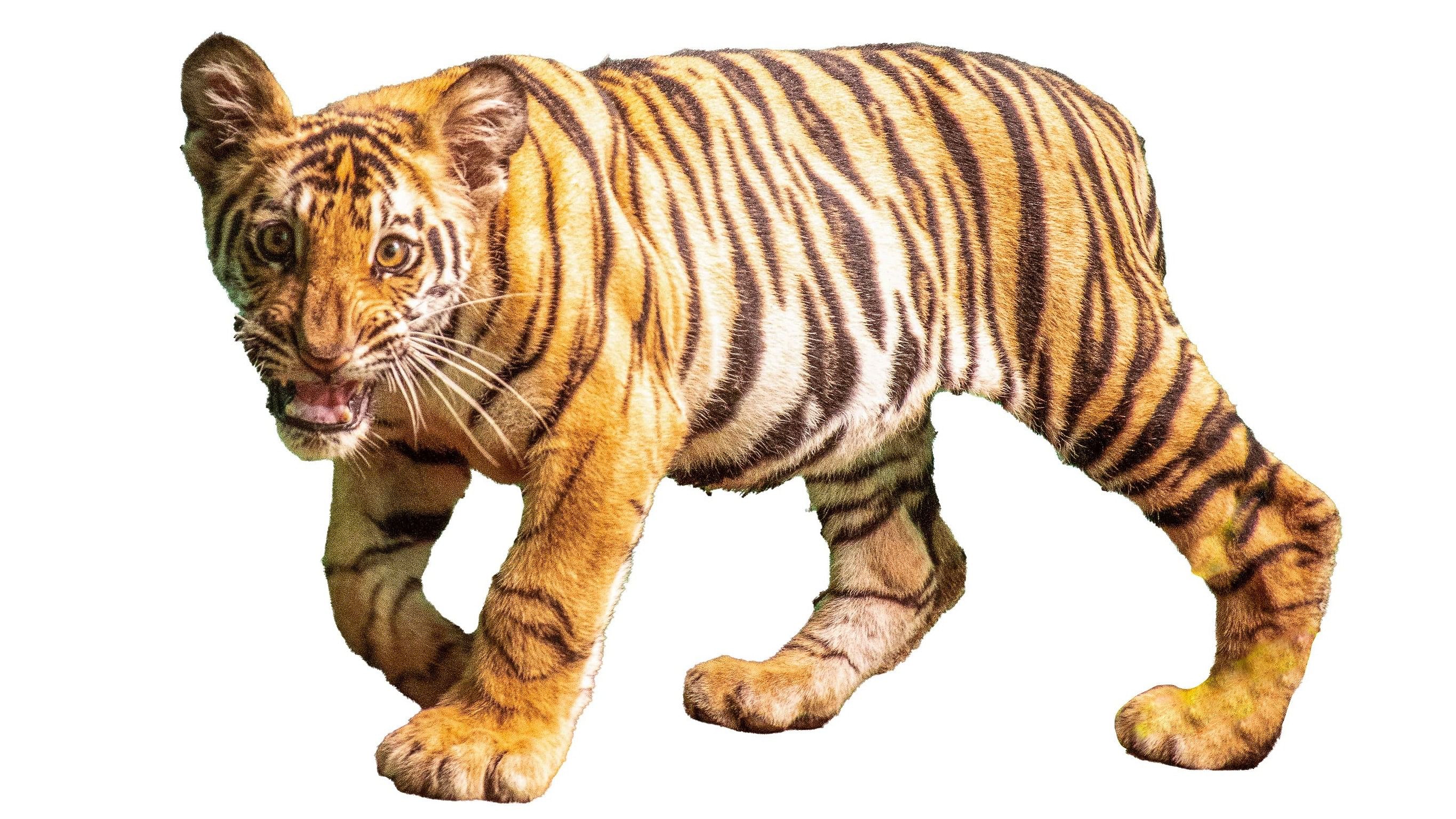
When ‘Veeru’ was rescued in pitch darkness from a house next to Kali Tiger Reserve (KTR) in Dandeli taluk on April 27, the villagers feared he would not survive another day. The three-month-old Royal Bengal Tiger cub was completely weak as he had not tasted a morsel of meat for 10 days after being separated from his mother.
But Veeru clung to life, thanks to the efforts of trained rescuer Rahul Bavaji, the officials of KTR and Gadag zoo authorities. The cub regained his lost weight and kept his ferocious defence intact.
Zookeeper Chandru gets a warm welcome from Veeru as he steps into the cage. But for the others, it is a frosty glare and an angry growl.
The zoo authorities are making a conscious effort to minimise Veeru’s interaction with humans so that he retains his wild instincts, although he may never be reintroduced into the wild. The cub is being managed scientifically.
According to Gadag Range Forest Officer (RFO) Sneha Koppal, the cub arrived at the zoo in a fragile and dehydrated state. “On the first day, the stress from the rescue operation left him so overwhelmed that he didn’t even touch the milk and water placed in the cage. Gradually, he started trusting Chandru and began consuming the food he offered. When he arrived at the zoo, he weighed 13 kg. In two months, he has gained 10 kg. The cub is completely healthy now and has no ailments.”
Sneha said Veeru will be shifted to another enclosure in a few months. He will not be on public display till the central zoo authority of India gives permission. Reintroducing him into the wild is not feasible as he cannot acquire the required skills. “Only a mother can teach the cubs jungle survival skills. Also, his daily interactions with humans will erase any fear, making him a potential threat if released into the forest,” she said.
There are multiple theories regarding how the cub got separated from his mother. Veeru was sighted along with his mother a fortnight before the rescue. A motorist had recorded the big cat family crossing the road near the Virnoli range in the Haliyal Division of Uttara Kannada district.
Forest department sources claim that the mother might have abandoned the cub due to her inability to feed him, given the region's prey base scarcity. Another theory is that the cub got separated while moving to a safer location. The third theory is that the mother might have died.
On April 28, an exhaustive day-long search in the vicinity of Veeru's rescue site yielded no trace of the mother tiger. "If the family had accidentally separated, the mother would have instinctively sought out her cub. But we did not hear any calls from the mother. The cub was found starving for over 10 days. So there is a high chance that mother might have gone missing,” speculated a senior officer from the Haliyal division, who did not wish to be named.
Wildlife biologist Narayanarao Sambakumar asserts that big carnivores will not desert their cubs. "In the wild, cubs of big cats get deserted when their mothers are missing either due to natural death (territorial fights) or other reasons like poaching. Given the high mortality rate of cubs, mothers typically take care of them until they become independent," he said.